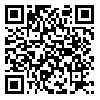BibTeX | RIS | EndNote | Medlars | ProCite | Reference Manager | RefWorks
Send citation to:
URL: http://jdc.tums.ac.ir/article-1-30-en.html

 , Akram Miramin Mohammadi *
, Akram Miramin Mohammadi * 
 1, Parviz Tousi
1, Parviz Tousi 
 , Ali Khamesipour
, Ali Khamesipour 
 , Amirhoushang Ehsani
, Amirhoushang Ehsani 
 , Seyyed Ebrahim Eskandari
, Seyyed Ebrahim Eskandari 
 , Niki Mahmoudi Rad
, Niki Mahmoudi Rad 
 , Yasaman Mirdamadi
, Yasaman Mirdamadi 
 , Zeinab Ghasemi
, Zeinab Ghasemi 
 , Mohsen Gerami Shoar
, Mohsen Gerami Shoar 
 , Shima Younespour
, Shima Younespour 

Background and Aim: Malassezia is a lipophilic and dimorphic fungus which has different species. Some of them can be found as natural flora on skin and in some conditions may cause pityriasis versicolor. The aim of this study was to identify Malassezia species associated with pityriasis versicolor in Iranian patients, using PCR-RFLP.
Methods: In this study out of 65 patients with pityriasis versicolor to have pityriasis versicolor,isolates of 60 patients were positive. Malassezia species. using by PCR-RFLP. The Internal Transcribed Spacer 2 (ITS2) region was amplified by PCR employing the ITS3 and ITS4 primers and The restriction endonucleases AluI, BanI and MspAI were selected for producing distinct RFLP patterns.
Results: M. furfur (36.7%), M. globosa (30.0%), M. sympodialis (20.0%), M. slooffiae (8.3%), M. restricta (3.3%) and M. obtusa (1.7%) were the microorganisms responsible for the infection among participants. The M. sympodialis infection was strongly correlated with the female gender (P=0.02).
Conclusion: Our findings suggest that, the most common Malassezia species associated with pityriasis versicolor was M. furfur, followed by M. globosa.
Received: 2011/02/19 | Accepted: 2011/06/21 | Published: 2013/07/16
| Rights and permissions | |
 |
This work is licensed under a Creative Commons Attribution-NonCommercial 4.0 International License. |



